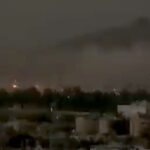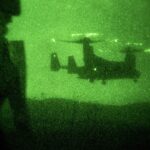After the US airstrike that killed General Suleimani, Iranian retaliation is very likely, but not guaranteed. Given the magnitude of the US response to the Embassy attack in Baghdad, Tehran is likely exploring ways to retaliate without overplaying its hand. Iran can either use its own personnel (IRGC or Artesh) or proxy forces (in Lebanon, Syria, Iraq, Yemen) to prosecute military, civilian or political targets.
There is NO GUARANTEE the response will be immediate. Iran does not have the logistical capability to mount prompt attacks against time sensitive targets and terrorist attacks against high-value targets require months of planning (e.g. ID target, assess security profile etc.). Our ROUNDUP is as follows:
- The biggest threat is a direct Iranian kinetic strike on static US/Coalition installations in the region. The IRGC-Aerospace Force is capable of launching ground-based ballistic and cruise missile strikes against US regional installations. In case of a saturation attack, US air defenses could be overwhelmed. However, this course of action is UNLIKELY due to the risk of starting an all-out war. Despite advances in its conventional capabilities, direct confrontation still remains Iran’s biggest weakness. The threat of saturation missile attacks on regional installations will remain Iran’s main deterrent against an US/Israeli raid on its nuclear facilities. While highly unlikely, the Department of Defense has actively prepared for such attacks for months. The newly announced deployment of 4,000 troops will further reinforce US regional capabilities.

VIEW FROM TEHRAN via T-Intelligence
- There is however, a SIGNIFICANT CHANCE that Iran could mirror the US’ direct action against Brigadier-General Qasim Soleimani and conduct/order its own assassinations. While it is unlikely that the IRGC could find, fix and finish a high-value US officer, they could compensate through a wave of ESCALATORY VIOLENCE directed against US personnel. While such attacks have been marked as a “red-line” by the Trump administration, Tehran could see it as “fair game” for retaliation. This possibility is taken SERIOUSLY by the Department of Defense, which announced that it will scale down operations in Iraq due to security reasons.
- LIKELY, Tehran will seek to make use of its asymmetric tactics, paramilitary allies, and irregular warfare style that it has learned to master in the past four decades. Such types of action include suicide attacks, kidnappings, and stirring violent unrests. The possibility of attacks on US consular facilities, diplomats and officers outside the Middle East, including Africa and South America, should not be ruled out.
Behind the scenes an ongoing diplomatic process aims to de-escalate the tensions. The Swiss embassy in Iran, which also represents American diplomatic interests, and the Government of Qatar are acting as back-channel mediators between the US and Iran.
Important visit to #Tehran, #Qatar will act as a crucial mediator in this crisis pic.twitter.com/XIlg0DHDj0
— Manu Gómez (@GDarkconrad) January 4, 2020
TEHRAN EXPECTED TO TREAD CAREFULLY
President Trump’s decision to remove Qasim Soleimani from the battlefield should – in theory – reinstate a credible deterrence and a strong red-line against Iran. Failure to retaliate meaningfully after the hundreds of rocket attacks on US bases in Iraq and the assault on the Embassy, would have been perceived by Tehran as a sign of weakness. The risk of not responding was significantly higher than of idling. Punishing Iran for its “grey-zone” aggressions and dragging the IRGC’s covert actions out of the shadow will expose the Islamic regime in Tehran to the world.
Ayatollah Khamenei tasked his IRGC generals to launch a “harsh retaliation.” Failure to react to the loss of its “national treasure” will make Iran look weak Soleimani’s deputy and now-successor, Brigadier-General Ismail al-Qa’ani will have to thread carefully or risk dragging Iran further into a conventional confrontation.
- Russia Bombs Maternity Ward & Children’s Hospital in Mariupol As Part of Siege - 10 March 2022
- T-Intell’s OSINT Training Marks One Year Anniversary - 18 November 2021
- IS-K Never Left the Battlefield - 27 August 2021





